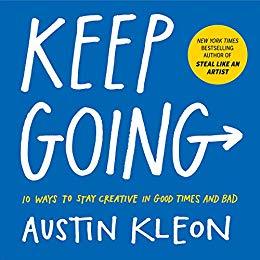More on this book
Community
Kindle Notes & Highlights
“What would you do if you were stuck in one place, and every day was exactly the same, and nothing that you did mattered?”
The truly prolific artists I know always have that question answered, because they have figured out a daily practice—a repeatable way of working that insulates them from success, failure, and the chaos of the outside world.
A little imprisonment—if it’s of your own making—can set you free. Rather than restricting your freedom, a routine gives you freedom by protecting you from the ups and downs of life and helping you take advantage of your limited time, energy, and talent. A routine establishes good habits that can lead to your best work.
Leonardo da Vinci made “to-learn” lists. He’d get up in the morning and write down everything he wanted to learn that day.
“Top 100” list of favorite trips, life events, books, records, movies, etc. I stole this practice from cartoonist John Porcellino,
“God walks out of the room when you’re thinking about money.” —Quincy Jones
“No artist can work simply for results; he must also like the work of getting them.” —Robert Farrar Capon “Don’t
great artists are able to find magic in the mundane.
When you have a system for going back through your work, you can better see the bigger picture of what you’ve been up to, and what you should do next.
If you want to change your life, change what you pay attention to. “We give things meaning by paying attention to them,” Jessa Crispin writes, “and so moving your attention from one thing to another can absolutely change your future.”
Art is supposed to make our lives better.
New ideas are formed by interesting juxtapositions, and interesting juxtapositions happen when things are out of place.
I ignore every “35 under 35” list published. I’m not interested in annuals. I’m interested in perennials. I only want to read the “8 over 80” lists.


